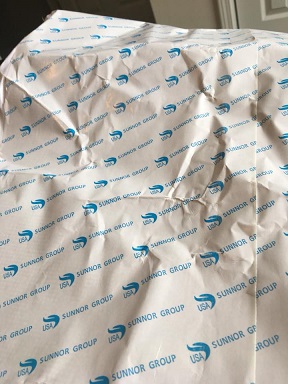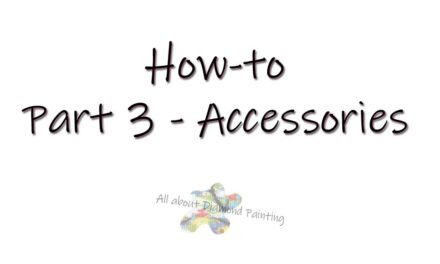In the last part of “How-to” (which you can find here: How-to – inventory), we went through how to inventory a Diamond Painting kit. When you have completed the inventory and are sure that you have everything needed for your Diamond Painting, we will focus on the canvas. You want to prepare the canvas a little so that the drills are sticking as well as possible and to get a good end result. Here we go over how to prepare the canvas before you start on your Diamond Painting.
Flat canvas
If the canvas you got is completely flat and without any creases or bubbles, I say congratulations. The canvas you received is really top notch and you should keep ordering stuff from that seller. Since you do not need to prepare the canvas, you do not really need to read much more here. However, it may be interesting for you to know what you are doing if the canvas should not be smooth at some point. Or if you happen to store the canvas yourself in a way that makes it fold.
Why is the canvas crinkly?
The reason why the canvas is wrinkled may be due to various things. One reason is that the seller did not package it properly and the package got tossed around in the mail. For example, an other heavy package might have been placed on it and smashed the contents as the package could not withstand the weight. It is obviously very sad when this happens and if the canvas is very wrinkled and these tips do not work to get it flat then you should contact the one you bought the painting from. If they are packaged poorly then the seller needs to know and you obviously want some compensation. If the package is well packaged but has been damaged in the mail despite this, the seller needs to contact the delivery company and solve the problem.

Crinkly canvas
Have you taken out your canvas and found it to be wrinkly? Then, before you start putting drills on it you need to try to get it flat. Getting it flat can be done in different ways. The simplest thing is to start in a corner and remove the protective plastic a bit. Then you put it back and then stroke your hand with it. Do this from all corners and the canvas should stop rolling and become flatter. I have found a video on YouTube that shows this in a very good way that you can find here: How to flatten a rolled canvas. The one in the video has protective paper that is in pieces but it is the same principle if you have a whole piece.
Did it not work or is the canvas very wrinkled? If so, I would advise you to iron it. You do this at a low heat level and very gently on the wrong side with a towel in between. Remember that you should not remove the protective plastic, it must remain on so that the adhesive does not come of the canvas. This is also why you should be very careful when ironing, so that the glue does not melt and come off the canvas.

In press
If you do not intend to start your Diamond Painting at once, it is good to store it in a way that make it remain flat. You can put it under pressure under some heavy books or under the mattress. If you put it under the mattress I would recommend putting it between two cardboard pieces. This way you are sure that it does not happen to bend when you sleep in your bed. I have also read about those who have hung the canvas on a trouser hanger and let it hang out. It obviously takes a little longer, but if you order a bunch of paintings at a time, you should be fine. Since you do not usually start everyone at once, it does not matter that some hang out on a hanger. It is also a smart way to store the canvas if you do not have enough space.
Bubbles
Something that may be in the adhesive on some canvas is bubbles. If you have bubbles in the glue, it will not only help to remove the protective plastic and replace it. No, you have to get rid of the air in the bubbles. The only way you can do this is to gently make holes in the bubbles with a knife. The easiest is to use a carpet knife, as it has a thin blade. If you have a small bubble, you can pierce it with a needle. When you have made holes in the bubble (either with a knife or a needle), you must push the air out of the bubble. Put back the protective plastic and press on the area where the bubble is, and the air should go out.










